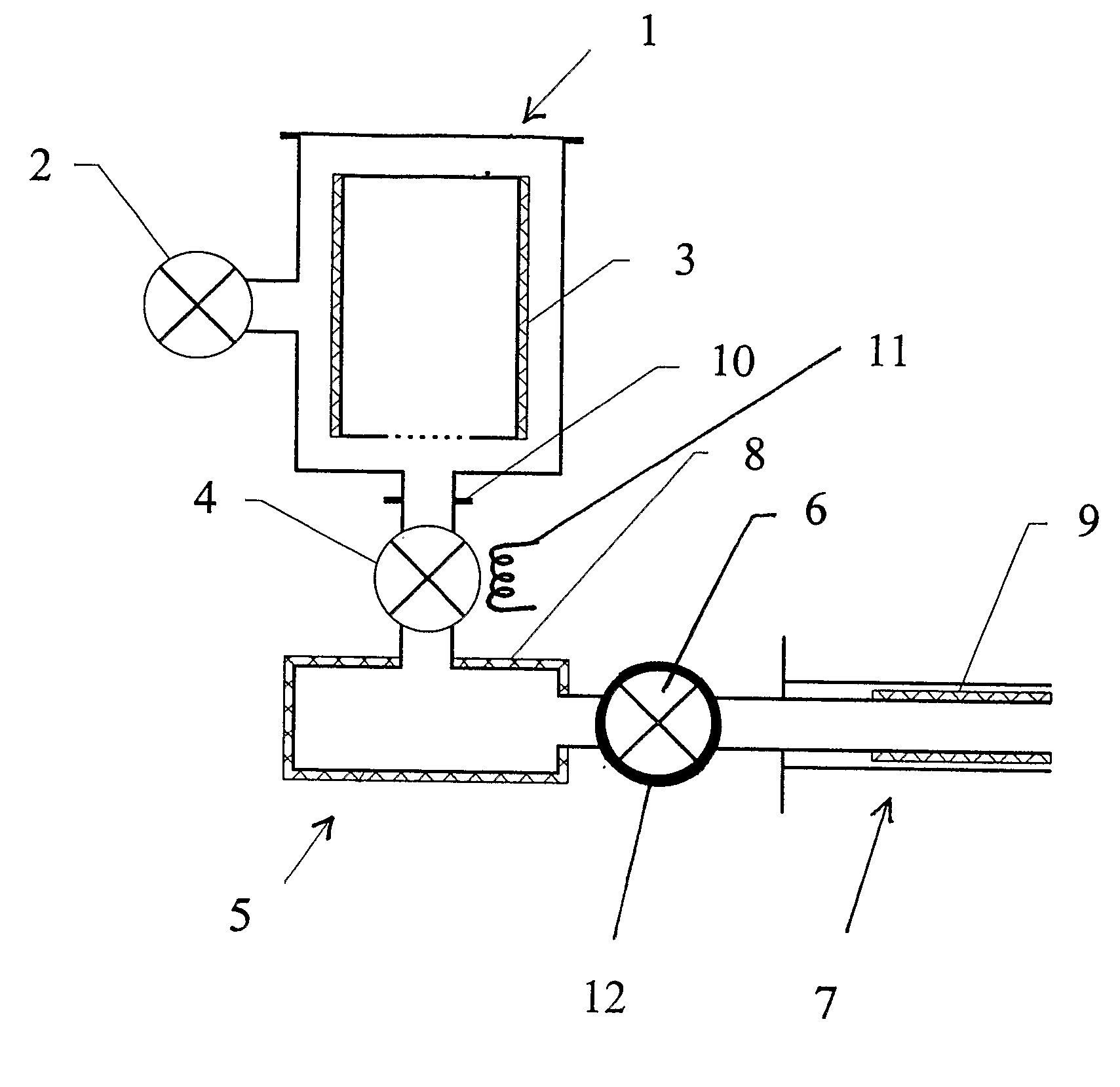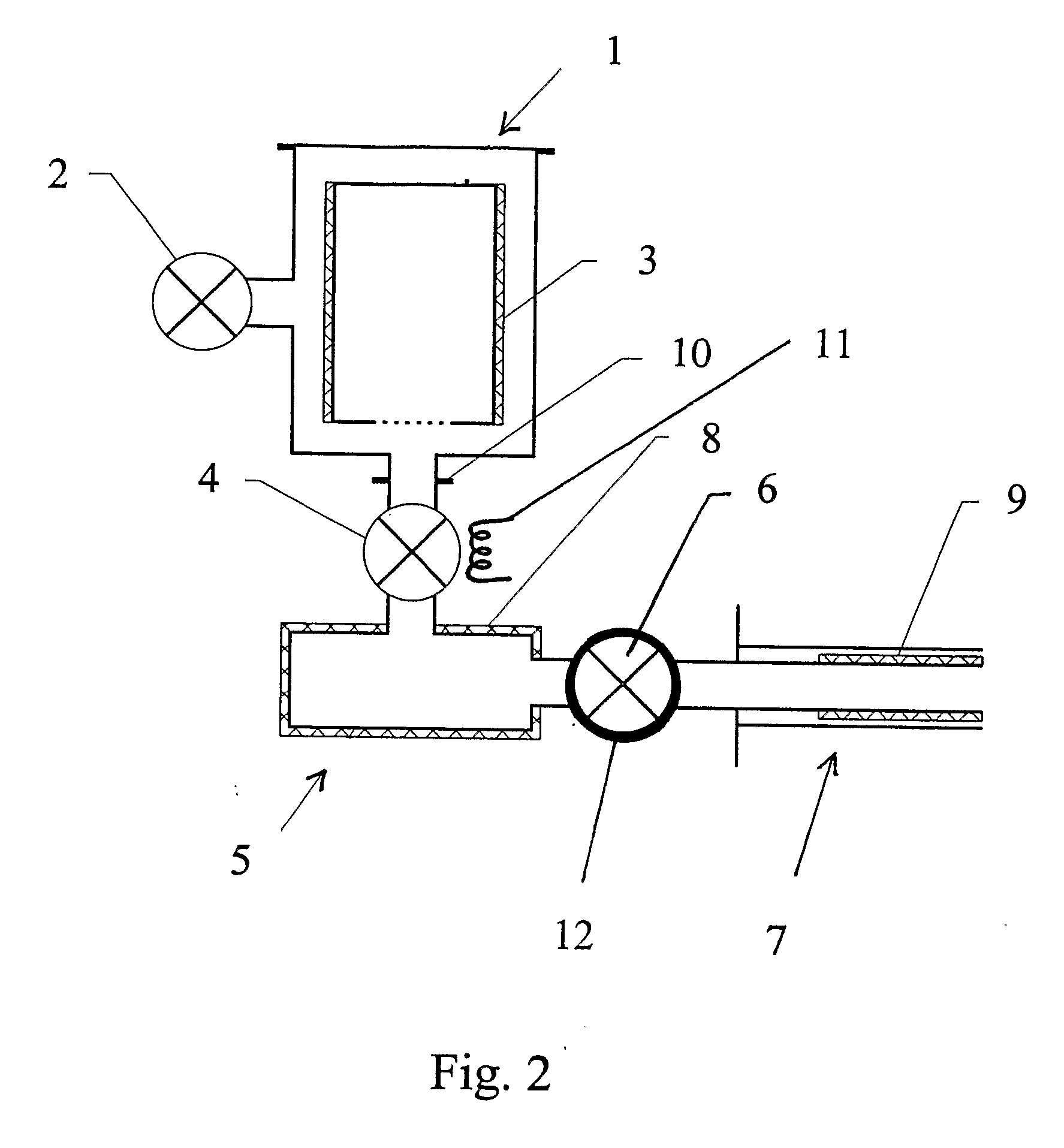Phosphorus Effusion Cell Arrangement and Method for Producing Molecular Phosphorus
- Summary
- Abstract
- Description
- Claims
- Application Information
AI Technical Summary
Benefits of technology
Problems solved by technology
Method used
Image
Examples
first embodiment
[0041]FIG. 1 illustrates schematically the invention.
second embodiment
[0042]FIG. 2 illustrates schematically the invention.
DETAILED DESCRIPTION OF THE DRAWING
[0043]FIG. 1 illustrates schematically a first embodiment of the invention. The Figure shows a vacuum container 1 for P-red. The P-red container 1 has a valve 2, which allows the P-red container 1 to be evacuated by a vacuum pump (not shown). The P-red container 1 has an internal heater 3, which is used to heat P-red to evaporate it by sublimation. The typical P-red temperature during P-red to P-white conversion is 350° C. The P-red container 1 has a second valve 4, which separates it from a P-white container 5 used for condensing the evaporated P-red, that is, a vacuum container 5 for P-white. The P-white container 5 is used for two purposes. First, during P-red to P-white conversion, the P-white container 5 is cooled to below 30° C. to condense the evaporated P-red. After the P-red to P-white conversion is completed, the valve 4 is closed. The second purpose of the P-white container 5 is to cr...
PUM
 Login to View More
Login to View More Abstract
Description
Claims
Application Information
 Login to View More
Login to View More - R&D
- Intellectual Property
- Life Sciences
- Materials
- Tech Scout
- Unparalleled Data Quality
- Higher Quality Content
- 60% Fewer Hallucinations
Browse by: Latest US Patents, China's latest patents, Technical Efficacy Thesaurus, Application Domain, Technology Topic, Popular Technical Reports.
© 2025 PatSnap. All rights reserved.Legal|Privacy policy|Modern Slavery Act Transparency Statement|Sitemap|About US| Contact US: help@patsnap.com



